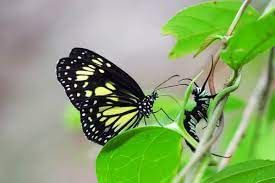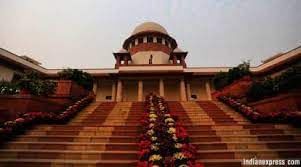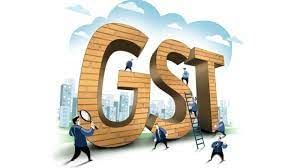UPSC Daily Current Affairs- 14th May 2023 | Current Affairs & Hindu Analysis: Daily, Weekly & Monthly PDF Download
GS-I
The PoSH Act: Gaps in enforcement, must secure women’s work space
Why in News?
Almost a decade into its enactment, the Supreme Court issued a slew of directions to ensure effective implementation of the Sexual Harassment of Women at Workplace (Prevention, Prohibition and Redressal) Act 2013/PoSH Act.
- This came after the apex court discovered serious lapses in the enforcement of the PoSH Act.
The PoSH Act 2013:
- Background - Vishakha v. The State of Rajasthan (1997):
- The SC issued the Vishaka Guidelines, with the primary objective of providing a mechanism for workplace sexual misconduct redress and grievance processes.
- These recommendations inspired the PoSH Act - a law administered by the Union Ministry of Women & Child Development (MoWCD).
- Objective of the PoSH Act:
- It aims to protect the rights of women at work and to make the workplace a safer place for them.
- The legislation also functions as a forum for both avoiding and addressing problems.
- Provisions of the Act:
- Defines sexual harassment at workplace: Unwanted sexual physical, verbal or nonverbal action is defined as physical contact and advances, demand or desire for sexual favours, making sexually tinged comments, showing pornography, etc.
- The concept of “extended workplace”: It defines “workplace” as any site where an employee goes as a consequence of work, including transportation offered by the organisation for the purpose of travel.
- Committees for complaints:
- The Act mandates any corporation or organisation with more than 10 employees to establish an Internal Complaint Committee (ICC) to hear and address sexual harassment allegations.
- The MoWCD introduced (in 2017) an online platform - SHe-Box - that directs complaints to the employer or organisation’s ICC.
- The Act mandates the District Officer to organise a Local Complaint Committee in each district where there are less than 10 workers.
- Duties and obligations of employer:
- It is a legal need to handle sexual harassment as a violation of service regulations.
- If the employer fails to comply with the regulations a penalty of Rs. 50000 or it can even lead to cancellation of licence.
Procedure for Complaint Against Sexual Harassment at the Workplace:
- An aggrieved female has three months from the date of the tragedy to make a written complaint with the ICC.
- According to the SC, the time limit can be extended if the lady is unable to submit the complaint owing to mitigating circumstances.
- Before initiating an investigation, the committee can try to resolve the matter through mediation between the women and the responder.
- If a settlement is reached, no further investigation will be launched.
- If the proposed conciliation does not provide any results, a fresh investigation (to be concluded in 90 days) will be launched.
- While directing the investigation, the Committee has the same authority as a civil court.
- If the ICC determines that the claim against the defendant is false, the woman may be fired.
- If the complaint is proven, the committee will recommend to the District Officer that sexual harassment be considered as improper conduct in accordance with the Act and the victim woman should be compensated.
- Any individual who is harmed by the ICC guidelines, may file an appeal with the court (HC) within 90 days of their implementation.
News Summary Regarding SC’s Directions on the Effective Implementation of the POSH Act:
- Background:
- The apex court was deciding an appeal against the Bombay HC order upholding an employee’s dismissal from service on sexual harassment charges.
- Allowing the appeal and sending the matter back to the Complaints Committee, the court flagged a report that 16 of the 30 national sports federations (including wrestling) don’t have an ICC as stipulated under PoSH.
- This is indeed a sorry state of affairs and reflects poorly on all the state functionaries.
- Being a victim of such a deplorable act not only dents the self-esteem of a woman, it also takes a toll on her emotional, mental and physical health.
- Many of them are reluctant to report such misconduct and even “drop out from their job.”
- There is the “uncertainty” over who to approach under the Act and the “lack of confidence in the process and its outcome.”
- The court issued some key directions to the Centre, states and UTs:
- To undertake a time-bound exercise to verify whether all Ministries, Departments, Government organisations, authorities, Public Sector Undertakings, institutions, bodies, have
- The information regarding the constitution and composition of these committees are to be made readily available on the website of the concerned authority.
- Immediate and effective steps by the authorities to “familiarise” committee members with their duties and the manner in which an inquiry ought to be conducted.
- The bench directed the National Legal Services Authority and State Legal Services Authorities to organise awareness programmes to sensitise employers, employees and adolescent groups.
Source: Indian Express
GS-II
Unique Identification Authority of India (UIDAI)
Why in News?
Unique Identification Authority of India (UIDAI) recently launched a nationwide capacity-building drive in order to improve the efficiency of thousands of Aadhaar operators across the country.
About Unique Identification Authority of India (UIDAI):
- It is a statutory authority established under the provisions of the Aadhaar Act 2016 by the Govt. of India under the Ministry of Electronics & Information Technology.
- Vision: To empower residents of India with a unique identity and a digital platform to authenticate anytime, anywhere.
- It is created to issue Unique Identification Numbers (UID), which is also known as ‘Aadhaar number’ to all the residents of India.
- Under the Aadhaar Act 2016, UIDAI is responsible for Aadhaar enrolment and authentication, including operation and management of all stages of the Aadhaar life cycle and the system for issuing Aadhaar numbers to individuals.
- Composition: UIDAI consists of a Chairperson, two part-time Members and the Chief Executive Officer (CEO), who is also the Member-Secretary of the Authority.
What is Aadhar?
- It is a 12-digit individual identification number issued by the UIDAI to the residents of India after a certain verification process.
- To get an Aadhaar number, individuals have to provide minimal demographic and biometric information, which include name, date of birth or age, gender, address, mobile number, and e-mail ID (optional), fingerprints, iris scans, and a facial photo.
- It serves as proof of identity and proof of address for residents of India.
- The Aadhaar number is unique for each individual and will remain valid for a lifetime.
- It will help the residents to avail of various services provided by banking, mobile phone connections and other Govt and Non-Govt services in due course.
Source: The Hindu
California Anti-Caste Bill (SB 403)
Why in News?
The California Senate has passed the SB 403 Bill, a legislation seeking to explicitly ban caste discrimination
Caste, Varna and Jati
- Caste is an institution uniquely associated with the Indian sub-continent.
- The English word ‘caste’ is actually a borrowing from the Portuguese casta, meaning pure breed. In Indian languages, this word is referred to by two distinct terms, Varna and Jati.
- Varna refers to a broad four-fold division of society into brahmana, kshatriya, Vaishya and shudra. This excludes a significant section of the population composed of the ‘outcastes’, sometimes refered to as the panchamas or fifth category.
- Jati refers to the regional or local sub-classification of this broad four-fold division into hundreds or even thousands of castes and sub-castes.
Caste discrimination in U.S
- Ambedkar once wrote that “if Hindus migrate to other regions on earth, Indian caste would become a world problem.”
- Indian Americans are the second-largest immigrant group in the US. According to data from the 2018 American Community Survey (ACS), which is conducted by the US Census Bureau, there are 4.2 million people of Indian origin residing in the United States.
- A 2020 study conducted among Indian Americans by the Carnegie Endowment for International Peace found that roughly half of the Hindu respondents identified with a caste group.
- In the U.S., caste has long been a sensitive and controversial issue as it stands directly in opposition to the myth that the Indian diaspora is a “model minority”—a group of well-educated and hard-working immigrants who assimilate seamlessly into the country.
- A survey conducted by Dalit rights organization Equality Labs in 2018 found that one in four Dalits had faced verbal or physical assault, while two out of every three faced caste discrimination at work. In 2020, California regulators sued tech giant Cisco Systems Inc for allowing caste-based harassment.
California SB 403 Bill
- A similar bill is being introduced in the State House of Representatives, before it can be sent to the Governor to be signed into a law. The law would make California the first US State to add caste as a protected category in its anti-discrimination laws.
- The bill adds caste as a protected category to an existing law, the Unruh Civil Rights Act, which provides that all people in California are entitled to the full and equal accommodations, advantages, facilities, privileges, or services in all business establishments.
- The bill provides explicit protections to those who have been systemically harmed due to caste bias and prejudice.
- It also provides firm legal consequences for those seeking to avoid responsibility or ramifications for permitting or participating in caste discrimination and caste-based violence.
Other anti-caste discrimination policies in the U.S.
- This law is an extension of a similar trend that has been observed in college campuses across the US. Several universities in the U.S., including Harvard, Brown and California State University, have added the caste criteria to its anti-discrimination policies.
- Earlier this year, Seattle became the first US city to outlaw caste discrimination.
Arguments in favour of California Bill
- All of the inequalities associated with Caste status have become embedded into mainstream American institutions which have significant South Asian immigrant populations.
- Till now in California, caste “was not an explicitly protected class”. The human rights authorities were unable to investigate a complaint based solely on caste discrimination. Caste discrimination should be recognised even if it is experienced by “just a small population”.
Arguments against California Bill
- Many Hindu organisations across the US opposed this move on the ground that it could put the Hindu Community under more legal scrutiny, generate more anti-Hindu discrimination and could dissuade employers from hiring South Asians.
- They also argued that proper research has not been done before the resolution was passed.
Caste discrimination in India
- According to the Census (2011), there are an estimated 20 crore Dalits in India.
- Article 15 of the Constitution lays down that no citizen shall be discriminated against on the grounds of religion, race, caste, sex, place of birth or any of them.
- To address the social discrimination that arose out of the practice of untouchability, the Constitution (Scheduled Castes) Order of 1950 was enacted, recognising Hindu Dalits as Scheduled Castes, later amended to include Dalits who had converted to Sikhism and Buddhism.
- The Protection of Civil Rights Act, 1955 was passed to end untouchability.
- The Scheduled Castes and the Scheduled Tribes (Prevention of Atrocities) Act, 1989 was enacted to prevent atrocities against the scheduled castes and scheduled tribes.
- In 2021, 50,900 cases of crimes against Scheduled Castes (SCs) were registered, an increase of 1.2% over 2020 (50,291 cases), according to National Crime Records Bureau data.
California
- California is a state in the Western United States.
- California borders Oregon to the north, Nevada and Arizona to the east, the Mexican state of Baja California to the south; and it has a coastline along the Pacific Ocean to the west.
- The state's extremely diverse geography ranges from the Pacific Coast in the west to the Sierra Nevada mountains in the east to the Mojave Desert in the southeast.
- It is the most populous U.S. state and the third-largest by area.
- Sacramento is the state's capital, while Los Angeles is the most populous city in the state.
Source: The Hindu
Shanghai Cooperation Organisation (SCO) Startup Forum 2023
Why in News?
After two successful editions in virtual mode, Startup India, Department of Promotion for Industry and Internal Trade, Ministry of Commerce organized the third edition in the form of first-ever physical Shanghai Cooperation Organization (SCO) Startup Forum in New Delhi recently.
About:
- The engagement aimed at expanding the startup interactions amongst the SCO Member States, nurturing the spirit of innovation, generating more employment and encouraging young talent to build innovative solutions.
- The forum witnessed physical participation from SCO Member States including a delegation of government officials, private industry players, incubators and startups.
- This engagement focused on the spirit of collaboration and entrepreneurship.
- It aimed at promoting innovation development, particularly through the creation of common platforms and the facilitation of ideas and best practices among the SCO Member States.
- Various startup-to-startup bilateral meetings were conducted in promoting and achieving this agenda.
- In addition, the delegates also attended a workshop conducted by Startup India on the ‘Role of Bilateral and Multilateral Engagements in developing startup ecosystem’.
- The workshop included an interactive session to understand various models of engagements that can be undertaken to develop closer ties between these nations and boost the startup ecosystem in SCO nations.
- Previously, Startup India had organized various initiatives for SCO Member states including:
- SCO Startup Forum 2020: The SCO Startup Forum laid the foundation for multilateral cooperation and engagement for startups among the SCO Member States.
- SCO Startup Forum 2021: The two-day Forum was held virtually through a customized platform representing the Indian culture in augmented reality. SCO Startup Hub, a single point of contact for the SCO startup ecosystem, was launched in this forum.
- Focused Mentorship Program: A 3-month long virtual mentorship series ‘Starting-Up’ was organized for the nominated startups, to build capacity among the SCO Startup founders.
Source: PIB
GS-III
Govt’s New GST Compliance Measures
Why in News?
Government recently undertook two significant measures to curb tax evasion and increase compliance under the Goods and Services Tax (GST) regime:
- Lowering the threshold for businesses to generate e-invoice for business-to-business (B2B) transactions, from Rs 10 crore to Rs 5 crore, and
- Rolleing out the automated return scrutiny module for GST returns in a backend application for central tax officers.
More about the news
- The ‘Automated return scrutiny module’:
- This will enable the officers to scrutinise GST returns of centre-administered taxpayers selected on the basis of data analytics and risks identified by the system.
- Discrepancies on account of risks associated with a return will be displayed to the tax officers.
- They will interact with the taxpayers through the GSTN common portal for communication of discrepancies noticed in returns and subsequent action in form of either issuance of an order of acceptance of reply or issuance of show cause notice or initiation of audit/investigation.
- The automated return scrutiny module has already commenced with the scrutiny of GST returns for FY 2019-20, with the requisite data already with the tax officers.
- This will enable the officers to scrutinise GST returns of centre-administered taxpayers selected on the basis of data analytics and risks identified by the system.
- Changes changes for e-invoicing:
- At present, businesses with turnover of Rs 10 crore and above are required to generate e-invoice for all B2B transactions.
- 37th meeting of GST Council:
- The GST Council in its 37th meeting in September 2019 had approved the standard of e-invoice with the primary objective to enable interoperability across the entire GST ecosystem.
- Under this, a phased implementation was proposed to ensure a common standard for all invoices, that is, an e-invoice generated by one software should be capable of being read by any other software and through machine readability, an invoice can then be uniformly interpreted.
- The GST Council in its 37th meeting in September 2019 had approved the standard of e-invoice with the primary objective to enable interoperability across the entire GST ecosystem.
- New compliance:
- The government now has lowered the threshold for businesses to generate e-invoice for business-to-business (B2B) transactions to Rs 5 crore from Rs 10 crore under GST.
- The changes will come into effect from August 1.
- The government now has lowered the threshold for businesses to generate e-invoice for business-to-business (B2B) transactions to Rs 5 crore from Rs 10 crore under GST.
Significance
- Amid rising instances of GST frauds and cases of fake invoices, these changes are expected to broaden the compliance mandate for more businesses, especially small and medium enterprises
- The measures are also expected to help boost the GST revenue collections.
- With a uniform invoicing system, the tax authorities are able to pre-populate the return and reduce the reconciliation issues.
Challenges
- While the reduction in the e-invoicing threshold is seen as an important factor for boosting GST revenue collections and checking frauds, it will also increase compliance requirements for smaller businesses.
- Industry needs to ensure that any vendor supplying goods or services and crossing the threshold turnover of Rs 5 crore is necessarily issuing an e-invoice from August 2023 to avoid any dispute with respect to availability of input tax credit.
Source: Indian Express
What are Milkweed Butterflies?

Why in News?
A recent study by a team of researchers shed light on the migration patterns of Milkweed butterflies in southern India.
About Milkweed Butterflies:
- They are any of a group of butterflies in the brush-footed butterfly family (Nymphalidae).
- There are some 300 species in the group, including the iconic Monarch butterfly.
- Distribution:
- The majority of species are found in both Old and New World tropics (Old World refers to Europe, Africa, and Asia, while New World refers to North America, South America, and the Caribbean).
- However, some well-known members of the group, such as the monarch butterfly and the queen butterfly, live in temperate regions.
- Features:
- The large, colourful adults have long, usually brownish or orange wings marked by black-and-white patterns.
- They fly slowly, and some, such as the monarch butterfly, migrate great distances.
- They feed chiefly on milkweed and sometimes on nightshade.
- These plants contain acrid, milky juices that probably make the larva and its subsequent stages distasteful to predators. This, combined with a conspicuous colouration, protects them.
What is a brush-footed butterfly?
- Brush-footed butterfly (family Nymphalidae), also called the four-footed butterfly, is any of a group of butterflies (order Lepidoptera) that are named for their characteristically reduced forelegs, which are frequently hairy and resemble brushes.
- The insect’s alternative name derives from the fact that there are only four functional, or walking, legs.
Source: The Hindu
|
38 videos|5293 docs|1118 tests
|


























